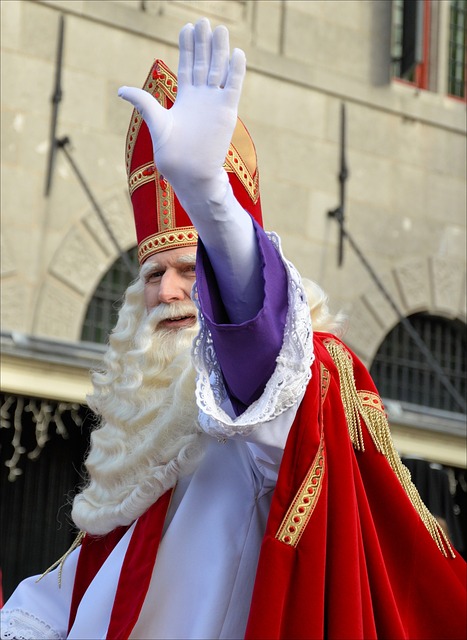 Commentary by Susan Brinkmann, OCDS
Commentary by Susan Brinkmann, OCDS
Several years ago, William J. Bennett wrote a book entitled, The True St. Nicholas: Why He Matters to Christmas, in which he details the story of this heroic saint and how his story became the foundation for the Santa Claus we know today.
As Bennett detailed in this article for Fox News, the real St. Nicholas lived during the fourth century in a town called Patara which is located in what is now Turkey. As a young man, he was moved by the story of a couple who had fallen on hard times and who could not provide dowries so that their three daughters could marry. Their only choice seemed to be to sell their daughters into servitude.
Moved by their plight, Nicholas took the few coins he had inherited, put them in a small bag and tossed them through a window into the home while the family was sleeping. It was enough money to provide a dowry for the oldest daughter, who was soon able to marry.
Heartened by the effect of his gift, Nicholas decided to toss more money into the house so that the second daughter could also be married. When he attempted to do so a third time, the father of the house was waiting to discover just who their secret benefactor was.
Nicholas begged him not to tell anyone, but it was too late. He was already on his way to becoming one of the most famous gift givers of all time.
Even though his life story has been obscured by time and legend, it’s a history worth exploring, writes Bennett, who is a lifelong Roman Catholic.
“Nicholas was a man of God who worked tirelessly for his flock. But the most remarkable part of his story comes after his death. People began to tell stories about the bishop and his power to change people’s hearts. Because all the good he did was a kind of miracle, they told stories of the miraculous — stories of a man who could accomplish things no ordinary person could.”
Gradually, he became an international phenomenon in the Old World with more than 2,500 churches, monasteries, hospitals and schools erected in his honor.
“At some point in the Middle Ages, people began exchanging gifts on December 6, Saint Nicholas Day, perhaps in memory of the bishop’s generosity. In some places, children woke to find their shoes filled with fruit or nuts — gifts from the kind old saint.”
My own family celebrated St. Nicholas’ Day every year. We would lay out our stockings on the dining room table before going to bed on December 5 and wake up to claim our prizes of candy and trinkets the next morning. This tradition was like a belle weather for the Christmas to come. If we found rocks in our stockings, it meant we were perilously close to being on Santa’s “naughty” list and had one last chance to get onto the “nice” list before December 25.
Even though St. Nicholas took some bruises during the Protestant Reformation, when his statues and stained-glass windows were demolished, his hold on the hearts of mankind was never quite broken.
“Over the centuries, something extraordinary happened. He moved into homes and became a hero of the hearth,” Bennett writes. “In America, of course, he transformed into the champion bringer of gifts. Those three bags of gold have become Santa’s sack of toys.”
Santa Claus, whose name derives from Sinterklass, the Dutch name for Saint Nicholas may sometimes be exploited, but, as Bennett so aptly records, at his best, “he stands for the virtues that Saint Nicholas championed: generosity, selflessness, largeness of spirit.”
Christmas is all about giving with no expectation of return – just like Our Lord did when He came to earth as a tender babe who was destined from all eternity to be the sacrificial lamb who was slaughtered for our transgressions.
On this feast of Saint Nicholas, let us thank God for the enduring legacy of his selfless giving!
© All Rights Reserved, Living His Life Abundantly®/Women of Grace® http://www.womenofgrace.com









